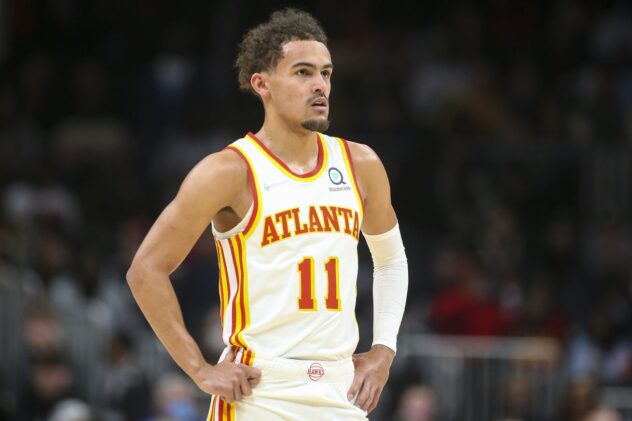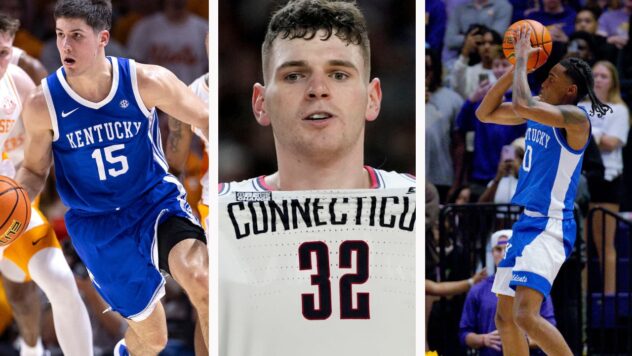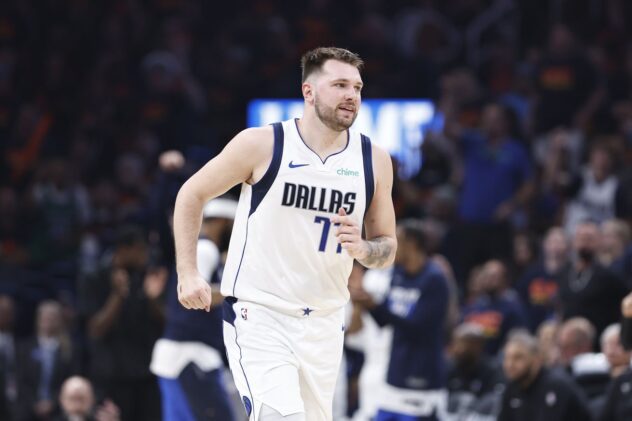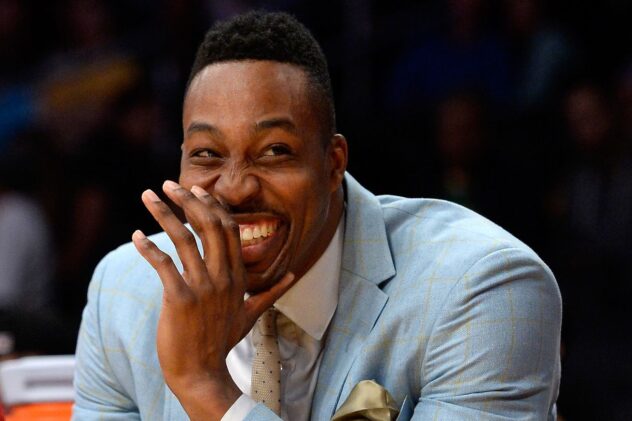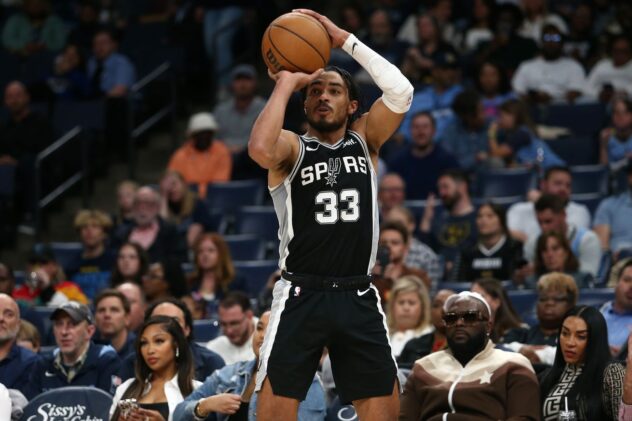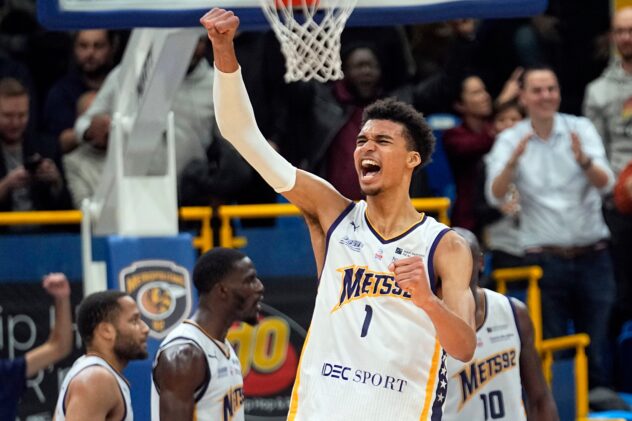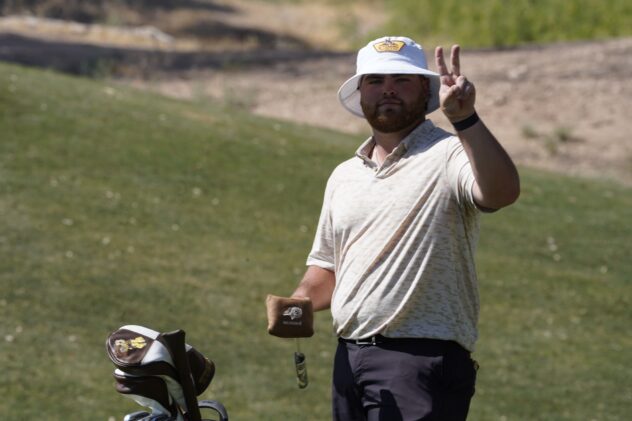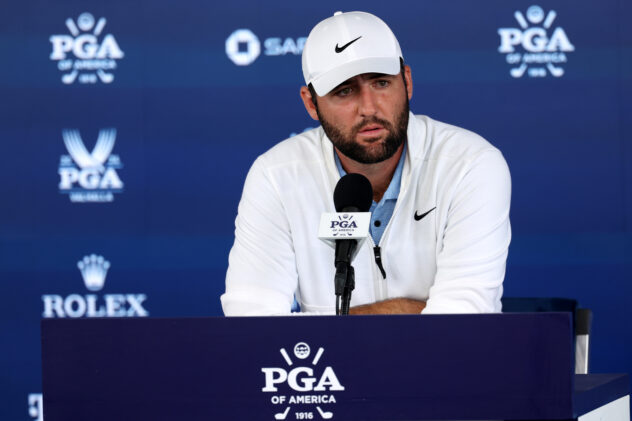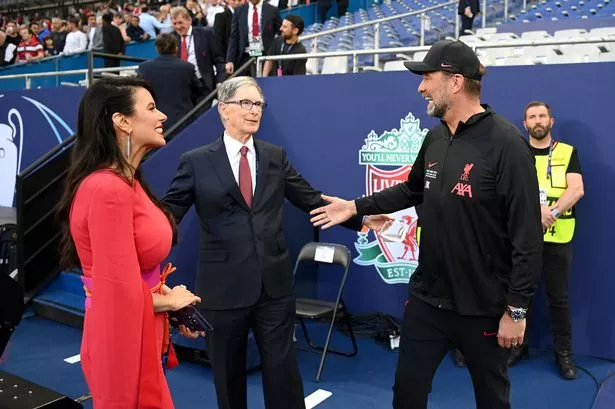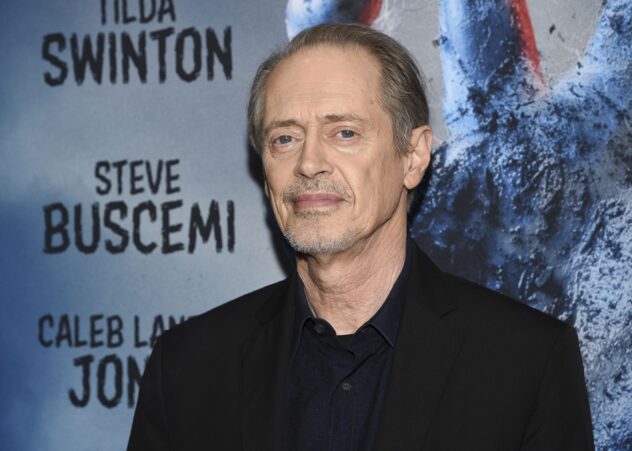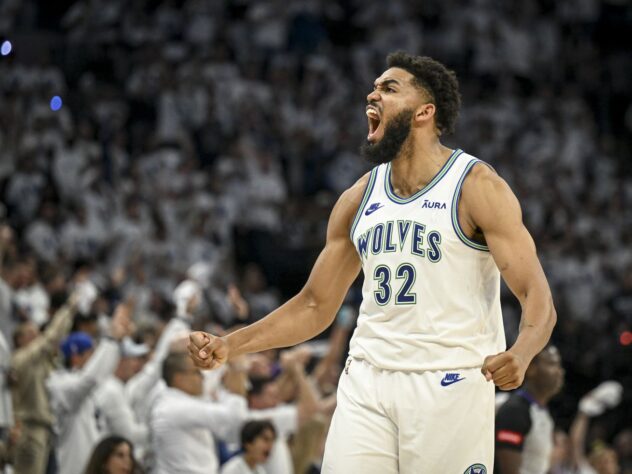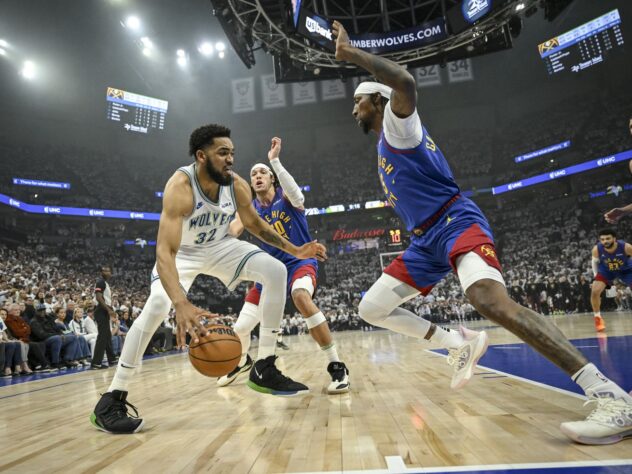Around the NBA: Haliburton’s leap, the rise of OKC, and are the Timberwolves for real?
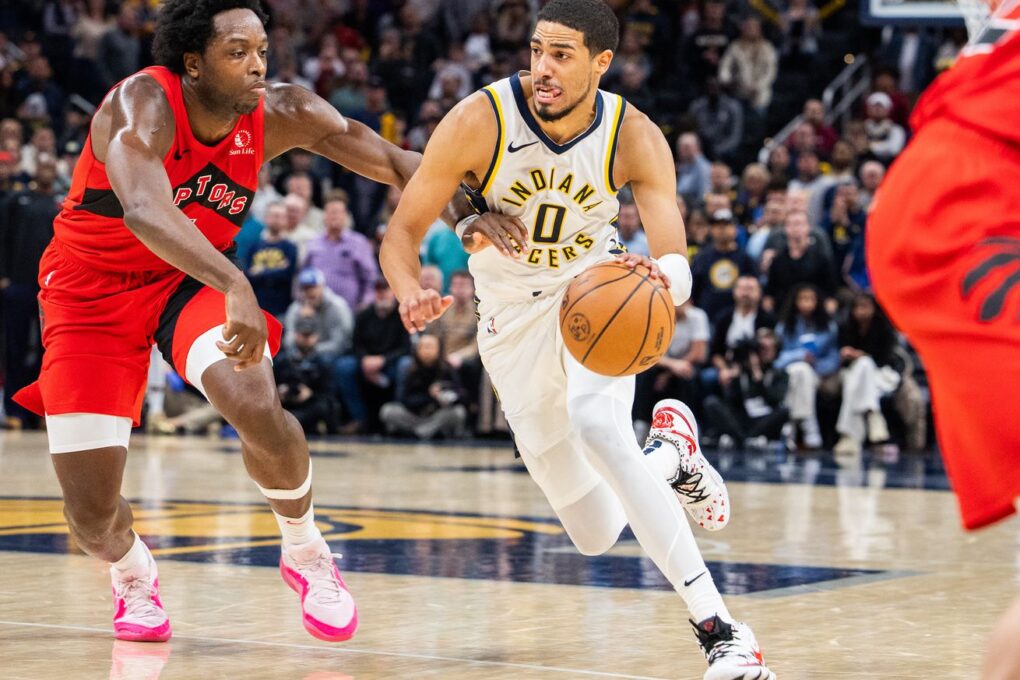
It’s time to analyze some young teams led by a few rising stars.
The NBA scriptwriters have really been on one to start the season.
Since the last “Around the NBA,” Draymond has submitted his checks note 1000th application to become a WWE star, Scott Foster has maintained his dominance over Chris Paul, and an All-Star game was played in mid-November.
I’m only half-joking about the last one, but watching the Pacers and Hawks make every shot was truly something else. More importantly, though, a suspicion many basketball fans have had was finally confirmed: Tyrese Haliburton is a full-blown superstar.
With that in mind, let’s start by analyzing just how good Hali has become and how far he can take the Pacers this season.
Tyrese Haliburton: future MVP?
Many statistical indicators are beginning to normalize now that we’re a month into the season, so it’s time to pull out some fancy stats to show just how good Haliburton has been.
Through 14 games, the Pacers have the highest offensive rating (122.9) in the league — a figure that drops to just 112.6 (which would be 20th) when Haliburton sits. Individually, the 23-year-old is averaging 25.3/12.3/4.0 while shooting 52.1/46.2/91.5 from the field.
Oh, and that’s not even his most impressive stat: running an offense with a 31.2% usage rate (81st percentile among his position), Haliburton averages just 2.6 turnovers a game, and his turnover percentage of 10.2% is comically low for a guard of his usage.
Many have compared him to Chris Paul, but I personally think that his game is more similar to Steve Nash’s due to both their unreal efficiency and proficiency as shooters. Moreover, Haliburton’s style of play is akin to Nash’s too — the Pacers currently play at the highest pace in the league by averaging 104.75 possessions per game, and some of their freneticism looks a bit similar to Nash’s Seven Seconds or Less Suns.
The numbers back it up, too: 34.6% of Indiana’s possessions have ended with shots with 15-24s left on the clock. Just take a look at the play below, where Haliburton takes advantage of a scrambling Hawks defense by pushing in transition and finding an open Mathurin for three.
— Bill Huan (@bill_huan) November 23, 2023
Like CP3 and Nash, Haliburton’s greatest strength is his mind. He’s an offensive genius who’s always five steps of everyone on the court, and it’s not crazy to say that his court vision now rivals that of Jokic and Luka.
One of my favorite aspects of Haliburton’s game is how he manipulates defenses with his eyes. He often looks to a teammate to get the defense to commit before whipping a pass out to a wide-open shooter in the corner, which contributed to Clint Capela collapsing into the paint in the clip below.
— Bill Huan (@bill_huan) November 23, 2023
Indiana’s front office has also done a good job of surrounding Haliburton with shooters such as Buddy Hield and athletic cutters like Obi Toppin, not to mention holding on to a pick-and-pop big in Myles Turner.
However, the Pacers’ lack of secondary stars and defensive ability (their 122.4 defensive rating is second-last in the league) unfortunately caps their ceiling as a fringe playoff team that could win a round, but nothing more.
With Haliburton still just 23, though, Indiana has a franchise piece who might be good enough to be the first option on a future title contender. It’s entirely possible that Haliburton will end up cementing himself as a top-10 player as early as this season (like SGA last year), and it’ll be up to Chad Buchanan to surround him with more stars to properly compete.
Who knows, maybe they might even become as good as the Thunder are right now.
Is OKC ahead of schedule?
Everyone’s preseason darling pick, I think it’s safe to say that the Thunder have exceeded expectations of even some of their fervent believers thus far.
Through 15 games, OKC is 11-4 with the second-best net rating at +9.3. More impressive is the fact that they are just one of two teams (alongside Boston) who are top 10 in both offensive (118.3, 8th) and defensive (109.0, 6th) ratings.
SGA has unsurprisingly been the head of the snake as almost all of his numbers are up, but the biggest difference between this OKC team and the one last year has been the addition of Chet Holmgren.
Coming into the season, many (myself included) thought that Chet would make an immediate defensive impact but take some time to settle in offensively.
Boy is he making me eat my words.
Interestingly, it appears like Chet’s offensive game is actually a little ahead of his defensive one at the moment, which is saying quite a bit given that he’s mostly been very good in his own end too. Thus far, the rookie has averaged 17 & 8 on a ludicrous 55.7/43.4/87.7 shooting splits. Of course, the difficulty of his shots aren’t as high as some other rookies given the talent on OKC’s roster, but the sample size is now large enough to conclude that Chet isn’t just a good shooter for a center — he’s a good shooter, period.
That’s a massive development for a team whose other two building blocks (SGA and Jalen Williams) aren’t great outside shooters, and Chet’s versatility will allow the Thunder to play five-out while also having a potentially elite rim protector.
Intriguingly, Chet has flashed off-the-dribble skills and is more than capable of creating his own shot, especially against less mobile bigs or one of the opposition’s weaker defenders — which he will be commonly matched up against given OKC’s other offensive threats.
— Bill Huan (@bill_huan) November 23, 2023
Another development I’ll be keeping an eye on is the number of pick and rolls Chet runs as the ballhandler. According to Synergy — which is notoriously stringent on what counts as a P&R — Chet has only run two this season as the handler, with one resulting in a drawn foul after blowing by a weak defender in MPJ.
— Bill Huan (@bill_huan) November 23, 2023
The other pick-and-roll resulted in a turnover due to Chet dribbling the ball off his foot after Steph switched on to him, and he obviously needs to tighten up his handle if he wants to be more of an on-ball player. Still, even with his lack of reps, there are signs that point to Chet’s potential as a secondary creator, both for himself and his teammates. If he reaches that level while also becoming an elite rim protector, there’s a world in which he turns into OKC’s most impactful player due to his two-way abilities.
Regardless, it’s unlikely he will become that level of player this season, which is why the Thunder are probably still a year or two away from being a true title contender. Even so, there’s no denying that they have the brightest young core in the league and seem poised to be a powerhouse for the foreseeable future — as long as there aren’t any cupcakes and amateur photographers around.
Are the Timberwolves legitimate contenders?
One of the more pleasant surprises of the season thus far, the Timberwolves are currently first in the West at 11-3 and have the 12th-best offense (115.4), 3rd-highest net rating (+8.7), and best defense (106.7) in the league.
That latter figure is especially impressive and has been the result of Minnesota’s three-headed defensive monster of Anthony Edwards, Jaden McDaniels, and Rudy “Peacemaker” Gobert. The Stifle Tower, in particular, has enjoyed a bounce-back season and should be in the running for his fourth DPOY (just don’t tell Draymond).
Interestingly, the Wolves actually have a better defensive rating with Gobert off the court (105.3) than with him on (107.4), but that can largely be attributed to opponents shooting 9.5% better from deep with Gobert playing (35.6% vs 26.1%), which is a stat that’s largely out of the control of the defense.
The most encouraging part about the Wolves so far, though, is that they have a +7.0 net rating when both KAT and Gobert share the court, which is a substantial increase from their +0.9 figure from last season. Minnesota has also outscored teams when they’ve separated the bigs and played them alone, so neither player is dependent on the other, either.
With that said, the true ceiling of this team will be decided by Ant. So far, he’s played at an All-NBA level and has increased his production across the board. Ant’s now one of the best perimeter scorers (26.1 points on 57.4% true shooting) and defenders in the league, but I think he still needs to improve his playmaking to truly enter the conversation as one of the best players in the league.
Encouragingly, he’s already made strides in that department. Take a look at the back-to-back possessions below: during Ant’s first two years in the league, he’s probably forcing that shot instead of kicking it into the corner.
— Bill Huan (@bill_huan) November 23, 2023
However, in order for him to take the next step offensively, Ant will need to make more advanced reads and put his teammates in even better positions to score. In that first clip, the right play was probably to either dump it down or lob it up to Gobert, who was wide-open for a dunk.
It’s definitely not an easy pass to make and one will need to become an advanced decision-maker with excellent touch to pull it off, but it’s likely the next step in Ant’s evolution if he does turn out to be one of the best players in the world.
At just 22, though, that leap probably won’t happen this year. As a result, I still view the Timberwolves as a tier-two contender that can make it to the Western Conference Finals but no farther. Outside of a handful of outliers, history tells us that championship teams need to have one of the five best players in the league in order to win, and although Ant has the potential to get there, he still needs to grow a bit more in order to reach those heights.
This week, please check out the one and only Jesus’ article on why the Spurs are relying too much on Zach Collins offensively. As always, Jesus did an impeccable job of explaining schemes and using video to show examples, and his articles are always worth reading.
Thanks for reading and have a great week!
All stats courtesy of Cleaning the Glass, NBA Stats, and Synergy Sports.

